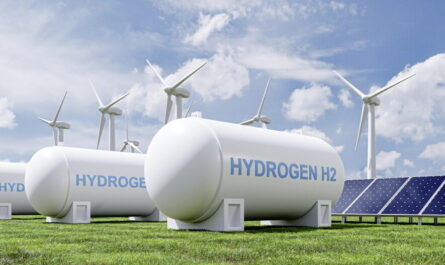LNG Bunkering: The Future of Green Marine Fuel
Introduction to LNG as a Marine Fuel
Liquefied natural gas (LNG) is emerging as one of the most promising fuels for powering large ships. With growing concerns around reducing emissions from the shipping industry, LNG offers significant potential for decarbonising marine transportation compared to conventional marine fuels such as heavy fuel oil. Some of the key advantages of using LNG as a marine fuel include:
– Lower emissions: Ships powered by LNG produce significantly lower emissions of sulphur oxides (SOx), nitrogen oxides (NOx) and particulate matter compared to fuel oils. This makes LNG compliant withstricter environmental regulations for the marine sector.
– Greenhouse gas reductions: LNG also provides moderate reductions in greenhouse gas emissions such as carbon dioxide (CO2) when compared to fuel oils. The use of bio-LNG could deliver near-zero emission operations.
– Operational cost savings: LNG may offer operational cost advantages versus conventional fuels due to its higher combustion efficiency and energy density. This makes ships powered by LNG more economical to operate over the long run.
Challenges in LNG Bunkering Infrastructure
While LNG presents an attractive solution for greening marine transportation, a lack of LNG bunkering infrastructure poses a major barrier to its widespread adoption. Unlike conventional fuels which can be easily bunkered in most ports, LNG requires specialized facilities and transport methods. Some key challenges involved include:
– Limited LNG bunker vessels: Very few LNG bunker ships currently exist worldwide which can transport and transfer LNG to vessels. Significant investment is required to expand the global LNG bunker fleet.
– Specialized port facilities: Dedicated LNG bunker terminals with storage tanks, vaporizers and transfer systems need to be set up in ports. This requires substantial capital expenditure from terminal operators.
– Complex bunkering logistics: LNG bunkering is a complex process that involves cryogenic transfer under high pressures. Ensuring safety and minimizing downtime during bunkering remains challenging.
– High initial costs: Retrofitting vessels to use LNG and setting up associated infrastructure demands large upfront investments. This increases the financial hurdles for wider LNG adoption.
– Regional imbalances: While some ports in Northern Europe and America have LNG infrastructure, availability remains limited in most global ports. This hinders the ability of ships to bunker LNG internationally.
Solutions to Overcome Infrastructure Barriers
Despite challenges, concerted efforts are underway globally to develop the LNG bunkering industry:
Standardization of bunkering: Industry alliances are releasing bunkering specifications and standards to harmonize LNG transfer procedures internationally. This will boost safety and ease operability.
Financial incentives: Ports in Europe and Asia are providing subsidies for LNG bunker vessel procurement as well as terminal infrastructure investments. Such incentives help lower barriers to entry.
Regional cooperation: Countries with robust domestic LNG markets like Japan are partnering with major ports to cooperatively develop international LNG bunkering corridors.
Modular small-scale facilities: Barges, tank containers and auto-transfer units offer portable modular solutions to provide interim LNG fueling in ports that currently lack permanent infrastructure.
Joint industry projects: Collaborations bring together ship owners, gas suppliers, class societies and terminal operators to jointly spearhead first-of-its-kind LNG bunker vessels and terminal projects.
Outlook: An Established Global LNG Bunker Industry by 2030
Driven by the IMO’s decarbonisation agenda and supportive regulatory push from policymakers, the LNG bunkering sector is projected to grow significantly in the coming decade. More than 150 ports worldwide have started exploring LNG infrastructure or begun construction. Major classifications societies are additionally drafting wide-ranging guidance on LNG bunker vessel design and safety.
By 2030, most major shipping hubs are expected to house permanent or floating LNG bunkering facilities. An increasing number of dedicated LNG bunker vessels will serve them, with shorter backup times compared to current early adopters. On the demand side, a wider tranche of deep-sea container ships, tankers and cruise ferries will dual-fuel on LNG.
While challenges around standardisation, financing and scaling up will remain, the overall outlook points towards the global establishment of a robust and commercial LNG bunker industry by the end of this decade. Widespread availability of marine LNG should then support the decarbonisation goals of international shipping.


